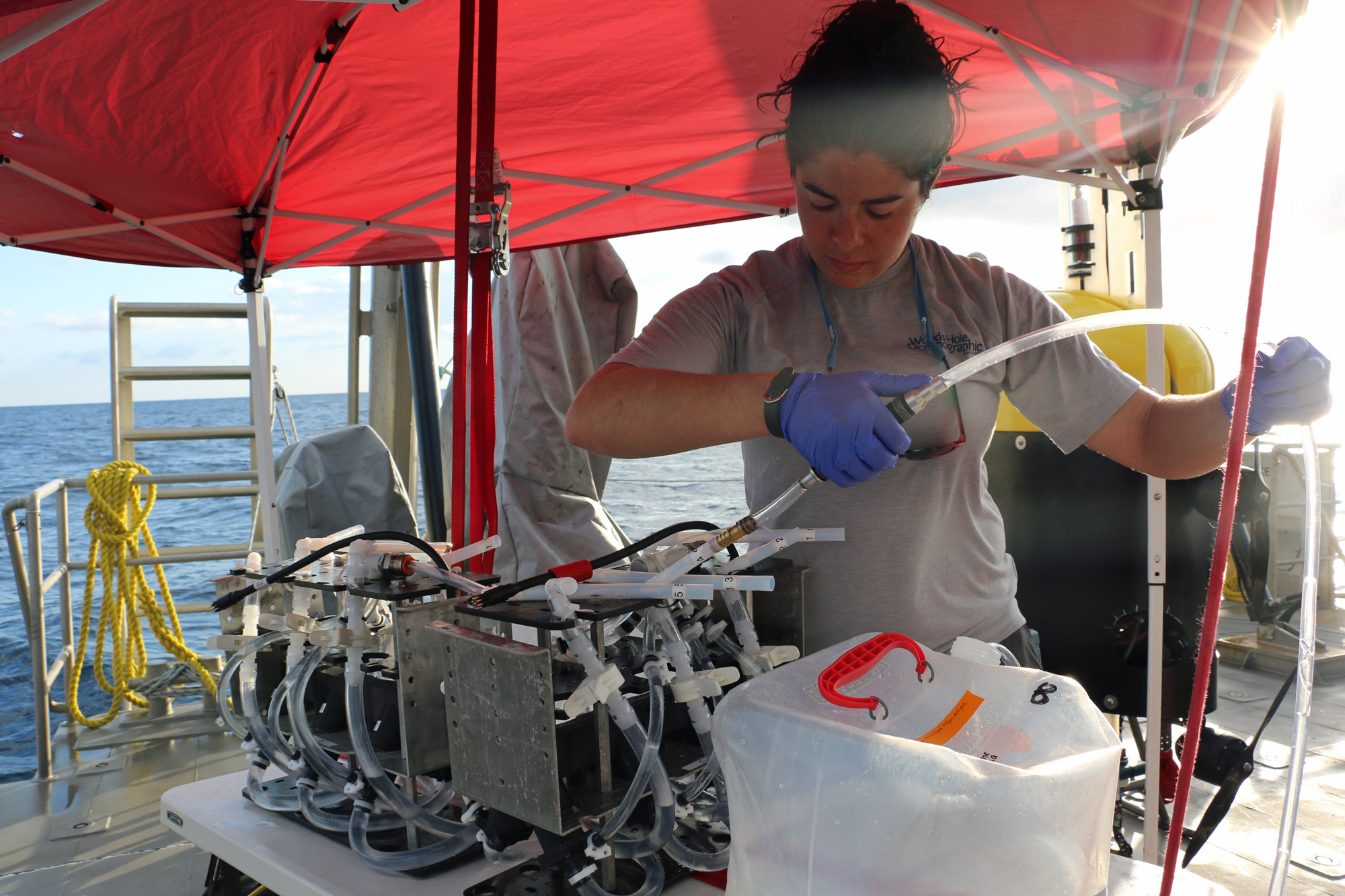Searching for rare and often elusive creatures in the ocean twilight zone comes with some challenges. The zone is enormous, has no “landmarks” scientists can use to navigate, and exists in near-total darkness. Furthermore, many animals, such as jellyfish, are not adequately sampled using existing net-based methods. To get around these limitations, the OTZ team is developing a new approach that uses environmental DNA (eDNA) to identify animals that have passed through the zone, leaving behind traces of genetic material in their path.
The team captures that genetic material using a new eDNA sampler that can filter large volumes of water in-situ. This devices can be attached to any underwater vehicle or platform, and pump hundreds of liters of seawater through a series of filters to collect biological material. By analyzing that DNA in the lab, scientists can reveal traces of animals that might otherwise be missed.
SPECIFICATIONS
| Filtering capability | adjustable, 1 liter to >100 liters |
| Sampling Capability | 12 samples per deployment |
| Filter Type | 0.2 micron PES |
| Propulsion | Towed aboard Mesobot |







